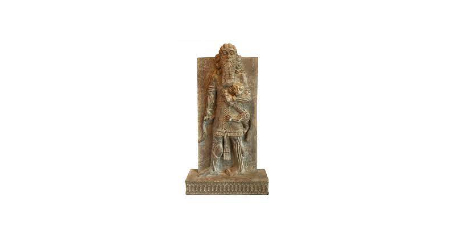Gilgamesh was a historical king who reigned in the Mesopotamian city of Uruk in about 2750 BCE.
He is the basis for the hero of the Epic of Gilgamesh, considered the oldest story in the world, a 1,000 years older than Homer’s Iliad or the Bible.
The first fragments of the story were found in 1853, written in cuneiform on clay tablets found in the ruins of Nineveh, the ancient capital of Assyria.
Cuneiform was not deciphered until 1857.
In 1872, George Smith, a curator at the British Museum, realised that one of the fragments told the story of a Babylonian Noah. This stirred up a great deal of interest – the Victorians saw it as proof that the Great Flood had actually taken place.
The Epic is set out on 11 clay tablets, only three of which are even close to complete. As a result, early translations are full of gaps and speculations.
Over the next 120 years or so, more fragments were found and the language became better understood - enabling more complete and more fluent translations.
The Epic tells of an arrogant king (Gilgamesh) whom the gods decide to tame by providing him with an equal (Enkidu).
Some scholars describe Enkidu as a servant of Gilgamesh while others describe Enkidu as his ‘beloved friend’.
The two men have various adventures, one of which results in Enkidu dying.
Gilgamesh’s grief following Enkidu’s death was intense.
Gilgamesh then went on to try to discover a way to become immortal, as he didn’t fancy going through the horrors of death, as Enkidu had. Gilgamesh failed in his attempts to become immortal.
Scholars have noted that the description of the intensity of Gilgamesh’s relationship with Enkidu suggests that their connection was possibly both physical and emotional.
Gilgamesh is described as caressing Enkidu the way that a man caresses his wife. Enkidu is described as Gilgamesh’s companion of his heart.
There’s also a story of how when Gilgamesh first met Enkidu, they wrestled. After the fight, they embraced and kissed, and held hands like brothers. From then, they walked side by side.

